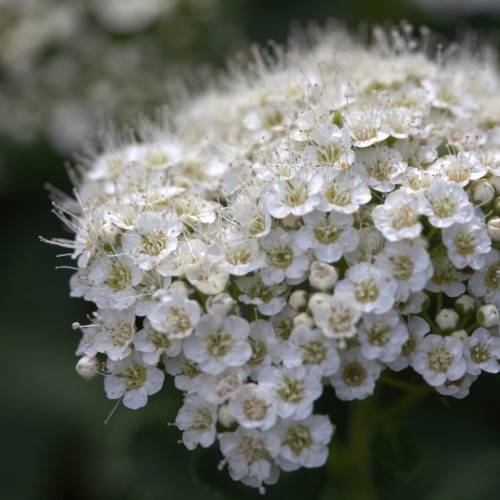
spirea
Spiraea betulifolia 'Tor'
Cycle:
Perennial
Watering:
Average
Hardiness Zone:
4 - 8
Flowers:
Flowers
Sun:
Full sun
Leaf:
Yes
Growth Rate:
Low
Maintenance:
Low
Drought Tolerant:
Yes
Salt Tolerant:
Yes
Care Level:
Medium
watering
Spirea (Spiraea betulifolia 'Tor') is a perennial shrub which thrives in areas with full sun and well-drained soil. During the active growing season, Spirea requires regular watering to keep the soil evenly moist. Water deeply and thoroughly, saturating the soil to a depth of 6 - 8 inches. Allow the top inch of soil to become dry to the touch before watering again. Allow for adequate drainage and do not allow the plant to sit in wet soil. In general, water your Spirea approximately 2 times per week, depending on weather conditions. During periods of hot and dry weather water more often, allowing the top couple inches of soil to dry out before watering again. In the late fall and winter months when plants enter dormancy reduce the amount of supplemental water and allow the soil to dry out between watering sessions.
sunlight
Spirea (Spiraea betulifolia 'Tor') plants grow best in full sunlight. At least 6 hours of direct sunlight is recommended daily, and more if possible. Because spirea can be grown in partially shaded areas, it is an ideal choice for somewhat shady garden areas. It will, however, grow best when it gets abundant sunshine—at least 8 hours of direct sunlight daily. Spirea plants bloom best when their heads are in the sun but their roots are shaded. Therefore, to ensure that both parts of the plant are properly cared for, place the plants in an area that receives direct sunlight part of the day and partial shade the rest.
pruning
Pruning spirea (Spiraea betulifolia 'Tor') plants is best done in late winter, right before the spring growing season. To keep your spirea looking its best, you should plan on pruning it with a pruning saw or secateurs once each year. When pruning, aim to keep the plant open and airy. Remove any dead and overcrowded branches, as well as any branches that cross or rub up against each other. Also, cut any branches that are too tall or too low for the desired shape. Finally, cut back some of the older branches, known as “heading back”, about 1-third of their length. This will encourage new growth and help maintain a balanced shape.
